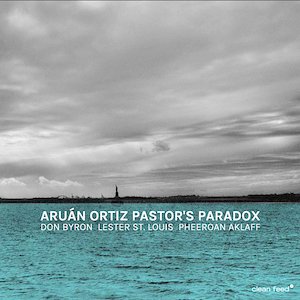Label: Intakt Records, 2025
Personnel - Aruán Ortiz: piano.
Cuban pianist Aruán Ortiz, who thrives on the avant-garde side of the jazz spectrum, brings a cocktail of influences into his new solo album, Créole Renaissance. Equally at ease with contemporary classical music, free/experimental jazz, and his Afro-Cuban roots, Ortiz operates in his natural mode of abstract lyricism, filled with genre-defying undercurrents and elusive pulses. Yet, this album doesn’t quite reach the heights of his previous solo outing, Cub(an)ism (Intakt, 2017).
“L’Etudiant Noir”—a reference to the Paris-based journal that signaled the awakening of racial consciousness—opens with stark timbral contrasts, blending upper and lower registers in striking counterpoint. Fragmentation is key to the narrative, coming to the fore on “The Haberdasher”, where stylistic pointillism is delivered with a laid-back informality.
Based on Duke Ellington’s “Sophisticated Lady”, “Seven Aprils in Paris” unfolds within a murky, mysterious sonic radius, built on constructive ambiguity. It lingers melancholically until finally opening up harmonically in its closing section. More compelling is “Lo Que Yo Quiero Es Chan Chan”, inspired by Cuban trovador Compay Segundo’s classic. Its riffs, subtly shaped yet unmistakable, ebb and flow with hushed sensitivity.
“The Great Camouflage” dwells in silences and suspended slow motions, while “Legitimate Defense” thrives on agitation and rising motifs. Meanwhile, “Deuxieme Miniature”, stands out with its catchy figures, rhythmically underpinned by robust chordal sequences.
Never abandoning the fragile impressionism that defines Créole Renaissance, Ortiz leaves the listener in a state of contemplative stillness. Still, a greater infusion of energized passages and momentum-driven thrusts would have provided a stronger balance to the prevailing reflective quietness.
Favorite Tracks:
01 - L’Etudiant Noir ► 07 - Deuxieme Miniature ► 10 - Lo Que Yo Quiero Es Chan Chan












